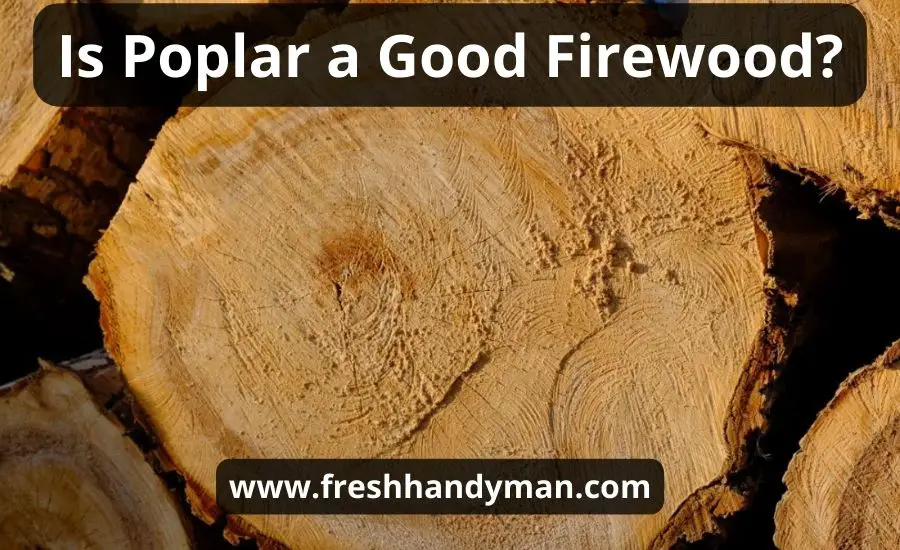Is Poplar a Good Firewood?
You’re here most likely because you need to burn some wood for fuel and warmth.
As for myself, I’ve been burning poplar mostly with my hatred only. I have an allergy to poplar pollen, you see, and it’s quite a nuisance. This time I’ll talk about some real burning.
Is poplar good as firewood? The answers to this question and even more in the article!

About poplar tree: common characteristics
Habitat. Poplar trees, also called Aspens and Cottonwoods, are native to North America, Europe, and Asia.
They mostly occupy the Northern Hemisphere.
Rate Growth. These trees grow fast and tall, ranging between 50 and 160 feet (15-48 meters) in height. Such height allows the poplar to be a great shade tree.
Appearance. Poplar trees vary in colors, but shape-wise they’re quite similar, growing upwards in a columnar fashion. For their neat and harmonious looks the trees are planted for architectural purposes.
Health. Poplar trees have a strong root system making them resistant to wind and storms. Pruning and daily maintenance are not required for this tree. Their abundance across different parts of the world from Asia to America is a testimony to poplar’s resilience.
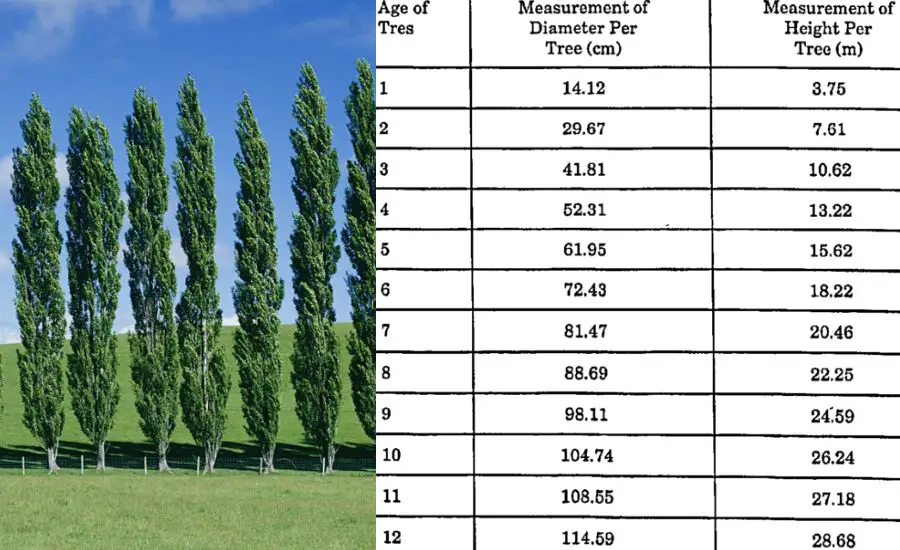
Types of poplar wood
There are over 30 different species of Poplar Tree. The most popular types include:
| The name of the tree | General info | Usage |
| 1. Tulipwood (Yellow Poplar) | Named after its pale yellow color. Grows in China and America. | The tree is often used for furniture and moldings. |
| 2. Eastern Cottonwood | A creamy-colored tree is known for its rapid growth. Found in the West. | Often used in paper production. |
| 3. White Poplar Tree (also known as Silver Poplar) | Named after the white color of the bark and white hairy underside of the leaves. European-based. | It’s often used for firewood purposes exactly. |
| 4. Black Poplar | Also known as black cottonwood, this tree has dark gray bark and green leaves. European-based. | It’s often used as firewood, but unlike white poplar, it produces much less smoke. |
| 5. Balsam Poplar Tree | Balsam poplar grows in America. Known for its nice aroma. | Used for various construction purposes. |
All in all, white and black poplars are the best pick for burning wood. The question is, is poplar wood good enough as fuel?
Poplar as a firewood: good or not?
Unfortunately, poplar is not the best firewood. Some would say, it’s not even a good wood.
The good thing, aspen burns hot. The bad thing, aspen unfortunately burns too fast.
So if hypothetically you live in cold wintery regions, it’s not a good wood to supply your home with warmth.
But you can use Poplar for some niche purposes, using the aspect that it burns quickly.
Firstly, cottonwood is an excellent fire starter. In a pile of firewood, it begins burning faster than most woods, and so fire spreads faster.
Secondly, cottonwood is a popular wood for campfires. You usually don’t want fire camps to burn for long, and aspen burns fast enough.
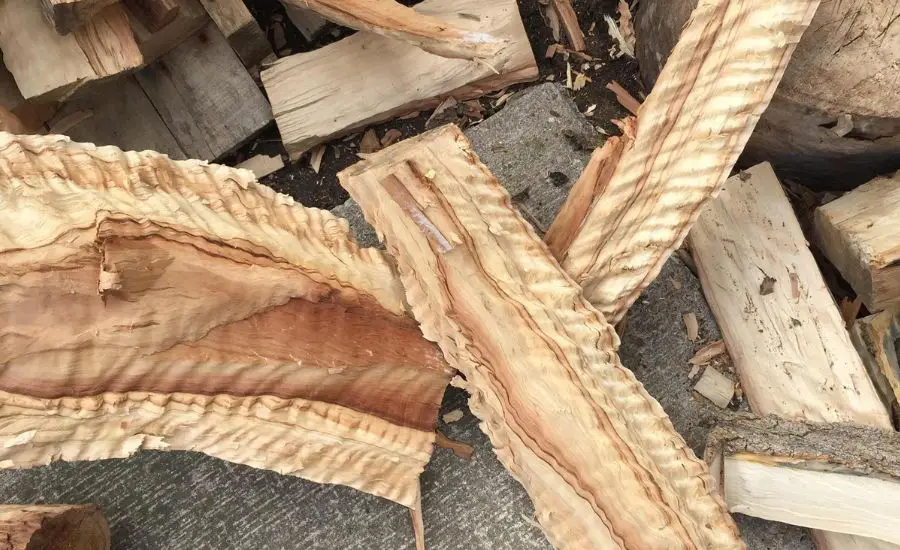
Poplar fire’s common traits
It’s not just about starting fires. Each tree burns in its peculiar way.
| Trait | Trait’s description | Additional information |
| 1. Smoke | Poplar produces smoke, especially if the wood is young and unseasoned. | Blackwood (also called Lombardy poplar) burns with significantly less smoke. |
| 2. Sparks | The cotton tree makes a lot of sparks as it burns. | For some people sparks might be a little nuisance. If something flammable is nearby, it can be scorched a bit by the sparks. |
| 3. Aroma | Poplars are not known for their pleasant smell. Some describe it as sweet and nutty, and others describe it as uncharacteristic at best and yucky at worst. | The reason for the bad smell is probably infections and bugs. Bugs look at poplars as free wood to make their home. When damaged rot bark burns, it’s not pleasant. Balsam poplar is named after its pleasant smell when burnt, so it’s the best species in terms of aroma. |
| 4. Coaling | Coaling means that the wood provides heat for a long time. Poplar is bad at coaling, meaning you need to keep feeding the fire frequently through the night. | The coating is bad because poplar firewood leaves no hot cinders behind, just ashes. |
| 5. Creosote | Cottonwoods don’t produce much creosote, mostly just harmless ashes. | Creosote is a leftover material after burning wood. This material is handy in the industrial sphere, but it can block chimneys. |
Poplar firewood vs other firewood
BTU is a measurement of heat output. For cottonwood and its relatives, the BTU is rated between 12.6 to 14.7 million, so it’s 13.85 million BTUs per cord.
If you compare it to the heat output of other species:
Red maple is 18.7 and sugar maple is 24 BTUs. It’s a lot!
White pine is 14.3 BTUs.
Oak, probably the most popular wood for burning, is 25.7.
What does all this data mean? Most other hardwoods burn hotter than aspen. While this doesn’t make poplars the worst firewood, the data shows that it’s not the best.
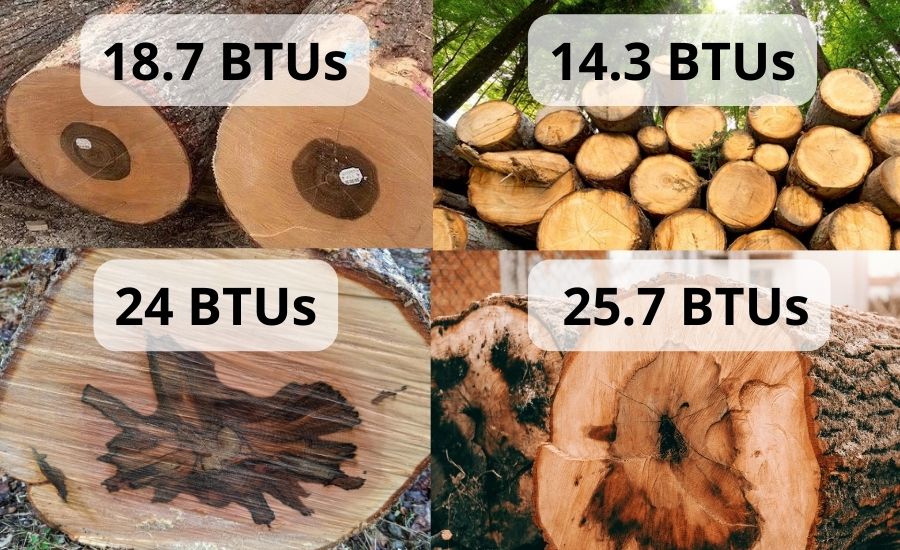
Ups and downs of burning poplar firewood
Let’s wrap this up. We’ll begin with the advantages:
- As a less dense wood, poplar is easy to cut.
- The firewood seasons fairly quickly. Dry wood not only burns faster but also more efficiently.
Now to disadvantages:
- Low BTUs. White Poplar has a 13.85 BTU in general, while most trees from the BTU chart have better results.
- Poplar burns quickly.
- Low coaling. Poplar firewood burns so fast that it doesn’t produce a mass of warm coals, unlike other firewood types.
Here’s a little breakdown of the disadvantages we’ve stated:
Low BTUs mean that a log of oak or hickory will produce a longer, hotter fire than a comparable size log of poplar.
A short burning means that compared to to oak and most other hardwood species, cottonwoods burn longer so keep your house warmer for a longer time.
You will be feeding your fire more often than you would if you burn a harder, denser wood.
Low coaling. The coals help keep warmth and the fire burning. Once the poplar trees burn out, you are left with a pile of ashes and no lingering heat.
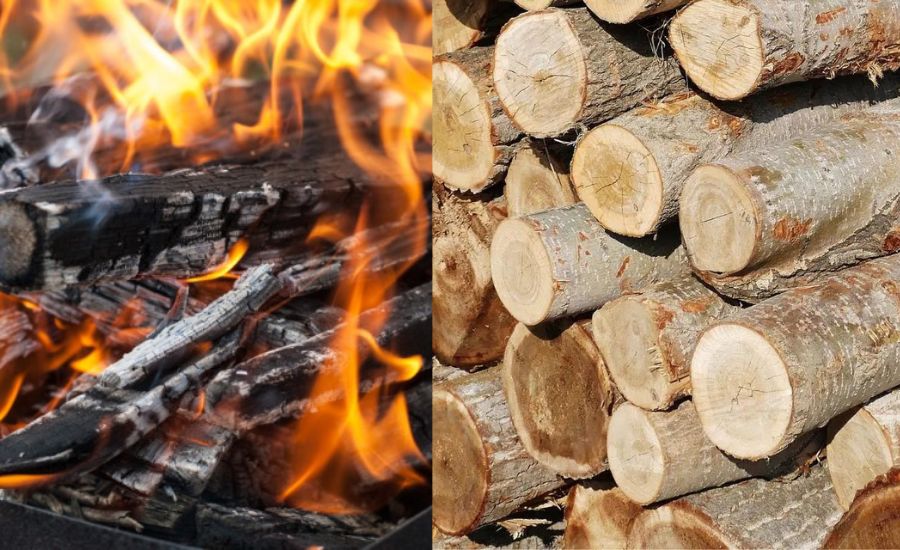
Cutting poplars
As said above, poplar wood is quite easy to cut.
Almost any axe can split poplar’s soft wood and straight grain. The main problem here is dealing with a falling tree when you cut it down.
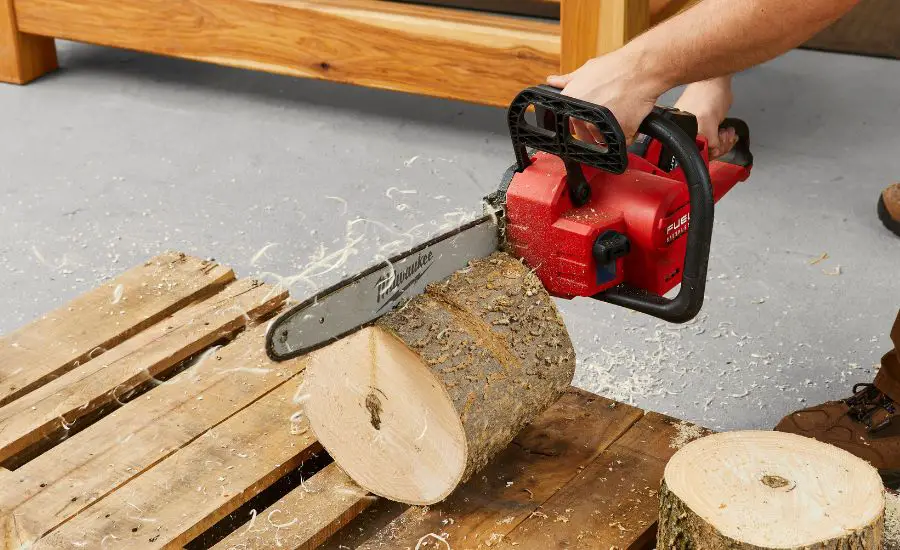
Other common uses
Poplars are most often used to create plywood and wood pulp used in manufacturing and construction. Lombardy Poplar is especially sought-after in this area.
Poplars are also known as air cleaners. They were even planted once in the USSR to help clean air, polluted by many factories. The trees release several times more oxygen than any other representatives of this species. Experts estimate that the poplar recycles almost 70% of street dust, dirt, and smoke.
Quaking aspen is also bad for the fuel, but historically it was very important for pioneers and American indigenous people for medicine and building purposes.
So while it’s not the supreme firewood, poplar has a lot to offer just not in the burning department.
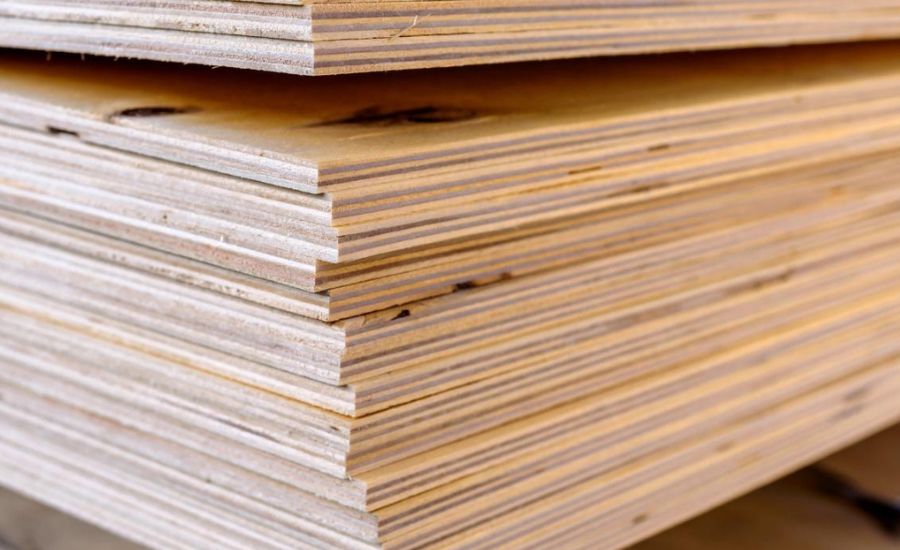
FAQ
You know a lot about poplar trees now. Let’s see what else there is to know.
Can I burn poplar in a wood burner?
Yes, definitely. Burning poplar is possible, just like most any other wood. Better put the dried wood, though. Allows to light the fire quickly.
How long does poplar firewood need to season?
Usually just a few months. The poplar can dry in just one summer if left in perfect conditions. it’s most efficient to burn the seasoned wood during the shoulder seasons (autumn).
What is the rating of poplar firewood?
Poplar’s rating is debated among hardwood species, as some people consider it a soft kind of firewood.
Poplar wood has at least 13 BTUs and some claim that it’s a bit higher, even 15 BTUs. Anyway, the heat output is rated mediocre.
What are the cons of poplar wood?
Low heat, a short-lived fire, and leaves only cold ashes behind.
Poplar: popular, just not for your furnace!
A good fire starter, mediocre firewood, but still useful and pretty!
We hope this article helped you learn more about many kinds of poplar wood and other hardwoods.
